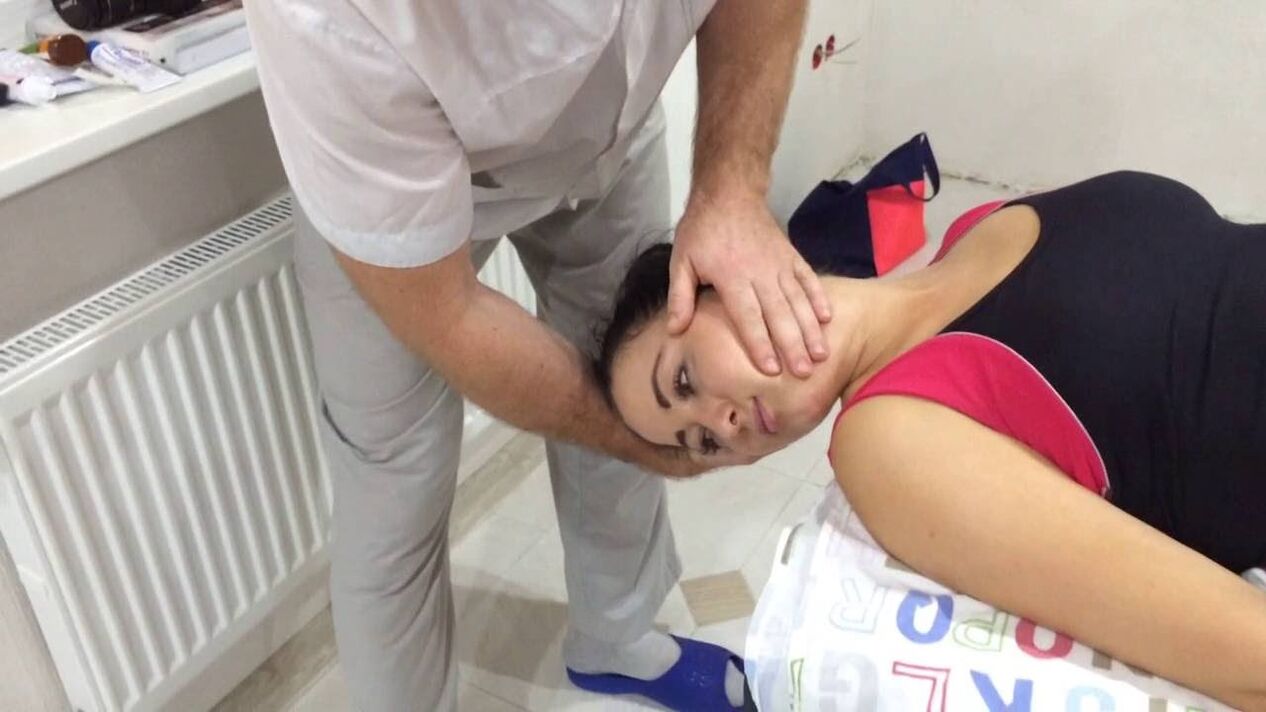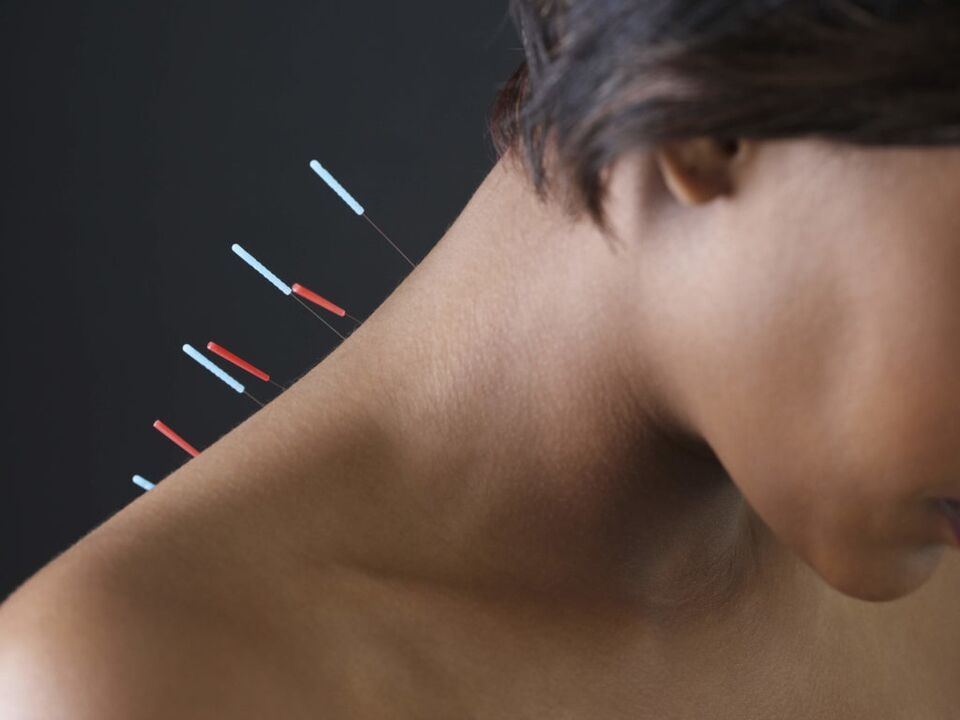
Cervical osteosarcoma is a pathological process in which the nutrition of the intervertebral discs is disturbed, leading to their gradual damage. With the progression of the disease, the discs lose their shape and no longer perform their primary functions. The spine's ability to withstand physical stress is lost.
Treatments
Effective treatment of cervical fibroids includes an integrated approach to the disease, combining drug therapy and physical therapy. If these methods do not achieve a positive effect, they must resort to surgical intervention.
Conservative treatment includes taking non-steroidal anti-inflammatory drugs, vitamins, and muscle relaxants. The former is designed to reduce inflammation and pain. If the pain is mild, a topical ointment or gel will help. The use of vitamins improves blood circulation leading to better nutrition for the brain.
But any medication will not be enough when the cause of osteonecrosis lies in a person's lifestyle and has not changed. If the disease is caused by constant work at the computer, it is necessary to do some aerobic exercises to warm up the neck.
Physical therapy methods give good results:
- electrophoresis;
- procedures for returning home;
- Massage;
- physical therapy.

Therapeutic exercises will help improve blood supply to damaged joints, relieve pain, and improve neck mobility.
Significantly reduces the discomfort of hirudotherapy and manual therapy.
For prevention during sedentary times, you should periodically self-massage, which helps to disperse stagnant blood and provide a dose of nutrients to the brain. In addition, you should eat in moderation, get enough rest in the evening and control your weight.
Cervical osteosarcoma is well-corrected in its early stages, before the onset of vertebral artery syndrome and myocarditis.
Treatment is aimed at eliminating pain, restoring blood supply to the brain and slowing the progression of the disease. The patient is treated by a neurologist. Conservative therapy is as follows:
- Registernon-steroidal anti-inflammatory drugslocal and system. Ointments, gels, tablets and injections cope well with the pain of osteonecrosis.
- In the acute phase of the disease, accompanied by severe pain, it is usedblockade paravertebral- use of topical drugs (anesthetics and corticosteroids).
- Drug therapy is a combination of non-steroidal anti-inflammatory drugs, antispasmodics,pain relievers and B complex vitamins.
- With severe pain affecting the neurological and mental state of the patient, sedation may be prescribed. With persistent pain (more than 4 weeks), they are replacedAntidepressants. These drugs allow you to stabilize the patient's mental state.
- In the acute phase, to reduce nerve root compression can be usedmuscle relaxants.
- To maintain regulated cerebral circulationvasodilators, as well as means to improve metabolism in nervous tissue).
With the ineffectiveness of conservative treatment for several months and the progression of the disease, they sometimes resort to surgical intervention.
Medical therapy
Drug treatment of cervical spondylosis involves the use of many different drugs.
NSAIDs (NSAIDs)
Non-steroidal anti-inflammatory drugs (drugs) are used as a symptomatic treatment, to reduce inflammation and eliminate pain at the time of flare-ups of the disease.
The course of taking NSAIDs to treat osteonecrosis of the cervical spine usually does not exceed 6 weeks. Medicines only work to treat symptoms and after the end of the course, the pain may return. Often, NSAIDs are used in combination with antispasmodics, which help relieve muscle tension in the vertebral region.
Anesthetic
Pain and muscle tension are effectively eliminated using a local anesthetic. Blockers are widely used from the combination of anesthetics with corticosteroids, which, in addition to analgesic effects, also have anti-inflammatory effects.
As a local anesthetic, a solution is used, consisting of substances that restrict the flow of impulses in the irritated nerve endings and block its movement through the internal areas.
Hormonal
Treatment with glucocorticosteroids can adversely affect your own hormone production. Therefore, modern medicine uses much less drugs of this group than before in the treatment of cervical fibroids and only when there are serious indications.
Hormonal drugs when entering the body will prevent the inflammatory process inside the cells.
Importance!With prolonged use, glucocorticosteroids contribute to cartilage destruction, so they should be combined with chondroprotectors.
Drugs containing corticosteroids help relieve pain quickly but at the same time negatively affect many internal organs. The course of hormone treatment rarely lasts longer than 7 days, because if used longer, bone loss and development of osteoporosis can occur.
Local stimulant
As a result of the destruction of the discs, displacement of the vertebrae and the inflammatory process, the vessels in the tissues of the body narrow. You can improve blood circulation with the help of warming, local irritant ointments.
When using such funds, due to the stimulation of nerve endings, blood flow in the problem area increases, which improves tissue nutrition. After applying the ointment, the treated skin area will turn red due to the active flow. Since such drugs have a tonic effect, they should be used during the day.
Among warming ointments, the most popular are made on the basis of butoxyethyl ether of nicotinic acid. In addition, capsaicin and dimethyl sulfoxide ointments are used..
In addition to ointments, special patches impregnated with active substances are used as a local irritant. So, for example, the composition of the famous pepper paste includes hot pepper extract, belladonna, lanolin oil. These ingredients have a stimulating effect, reduce muscle spasms and increase local blood circulation. At the same time, the process of oxygen delivery to cells and tissues is accelerated, thanks to which the pain disappears.
Chondroprotectors
There is an active discussion around these drugs. Not all doctors use chondroprotectors in the treatment of osteonecrosis. These drugs contain glycosaminoglycans and chondroitin sulfate, which make up the structural basis of the disc. It is believed that chondroprotectors prevent the destruction of cartilage of the spine and joint surfaces.
The composition of such preparations may contain chondroitic acid, mucopolysaccharides, animal cartilage, glycosaminoglycans, etc. v.
References.Some experts consider the effect of these drugs to be negligible, although it differs from the effect of a placebo, and the results achieved cannot be compared with their high price.
Preparations to improve blood microcirculation
This group of drugs promotes the dilation of blood vessels. The drugs improve blood microcirculation, eliminate violations of the outflow of veins, normalize metabolism, stimulate regeneration and increase the frequency of nerve impulses. As a result, blood circulation is normalized, metabolic processes in soft tissues are improved, and the degree of their swelling is reduced, brain activity is restored.
vitamin
With osteonecrosis, the attending physician may prescribe individual vitamins or vitamin complexes. Special attention is often paid to the B vitamins (B1, B6 and B12). Their absorption enhances nutrition for nerve fibers, supports metabolism in cartilage tissue and gives it elasticity, improves blood circulation and central nervous system activity, coppertime to stimulate metabolism.
In addition to B vitamins, the supply of ascorbic acid to the body is paramount. With regular intake, the regeneration of bone and cartilage tissue is improved, toxins are eliminated, and the metabolism of carbohydrates, proteins and minerals is regulated. It can partially reduce the need for vitamin B1, B2, A and E supplements.
Surgical intervention
It is indicated in the absence of a clear effect in the treatment of the disease by conservative methods, as well as in the case of the development of complications.
Indications for surgical treatment of cervical osteosarcoma:
- spinal stenosis, caused by a herniated or bulging disc - "compressing" the spinal cord and/or nerve roots, leading to pain, cramping, weakness, or numbness;
- cervical spondylosis - a condition in which the vertebrae are displaced along a transverse axis relative to each other, sliding when moving and putting pressure on the nerve roots and spinal cord;
- herniated disc - depending on the severity of symptoms, the severity of the patient's condition and the effectiveness of conservative therapy.
Massage
Massage is one of the main treatments. In this case, it is not only useful, but also an indispensable procedure. First you need to take a professional course. For the best results, it is recommended to conduct at least 10 sessions. With cervical osteochondrosis, massage can achieve the following effects:
- relieve pain and relieve muscle spasms;
- reduce edema;
- muscle strengthening;
- restore normal sound;
- improve blood supply and nutrition in the intervertebral disc;
- increased conduction of nerve impulses;
- improves metabolism;

A therapeutic neck massage can significantly improve the condition of the cartilage tissue in the neck.
After a professional course, you can perform simple tricks at home on your own. The peculiarity of the cervical osteopathy is the passive stretching of the muscles from the overstretched position in combination with the elements of massage. The technique should be applied after the spasmodic muscles are warmed by bathing, heating, or kneading.
For self-massage, the same techniques are used as in the professional version. That is tapping, kneading, scoring, patting, rubbing. The massage is done with warm hands. It is recommended to use liniment to improve glide. The technical sequence is as follows:
- caress;
- degeneration;
- kneading;
- exploit.
The end of a self-massage session should also be a caress. It is important that there is no intense pain during the procedure.
References.In addition to the traditional massage method to cure cervical spondylosis, some other techniques are also used such as acupressure massage or vacuum massage. In the latter case, medical banks or special vacuum devices are used.
Massage is very helpful for cervical osteochondrosis. However, there are some absolute contraindications:
- blood diseases;
- osteomyelitis;
- thrombosis;
- malignant or benign tumors;
- aneurysm;
- active stage of tuberculosis;
- the presence of numerous warts and moles on the body;
- spider veins in the back.
There are also temporary contraindications:
- heat;
- Infectious Diseases;
- exacerbation of chronic processes.
exercise therapy
If the disease has developed and is diagnosed, the first step after eliminating the pain and neurological symptoms with the help of drug therapy is a course of physiotherapy, as an integral part of the treatment. complex treatment. Moderate loads on the relaxed neck muscles contribute to the strengthening and formation of a muscular corset that supports the intervertebral discs.
The main way to prevent cervical osteonecrosis, as well as weakening of the cervical region, is to strengthen the muscles of the neck. This will help with therapeutic exercises. To get visible results, you should do at least 2-3 exercises 2-3 times a day. Starting position - sitting with your back straight.
- Exercise number 1.Tilt your head slightly forward and place your hand on your forehead. Then press your palms on your forehead and without moving your neck, hold the position for 30 seconds.
- Exercise number 2.Tilt your head back and slowly turn left and right for 1 minute. This exercise improves blood flow in the veins.
- Exercise number 3.Simultaneously raise your shoulders, try to bring them to your ears, and then lower them to the starting position. Then alternate - one shoulder down, the other up. Total time is 2 minutes.
- Exercise number 4.Place your palms on top of your head, and straighten your elbows to the sides. Press your palms firmly together for 2-5 seconds, then release your hands. Repeat 3 times.
- Exercise number 5.Perform a tilt of the head forward - on exhalation, back - on inhalation (3 times).
Exercise combines self-massage - rub your neck with circular movements.

Do some small exercises every day and you will soon feel much better.
Manual therapy
It is a set of non-pharmacological diagnostic and therapeutic techniques aimed at eliminating certain diseases of the spine.
References.Usually, about 10 sessions are done with an interval of 2 days. After the initial procedures, the patient may experience mild pain, which is considered normal. But if the pain does not go away in the future, you should stop the treatment. Persistent pain indicates an underqualified specialist or an incorrect diagnosis.
At the first visit, an experienced chiropractor always performs diagnostic palpation of the neck. The doctor determines the most painful places, assesses the condition of muscle tissue and skin. The success of further treatment will depend on a properly performed examination.
The session begins with a warm-up and a light massage. The doctor then stretches the muscles, reducing spasms in the cervical segment. At this stage, the patient feels no pain. Then, the therapist directly conducts the manipulation.
This is the most painful part of the procedure. The doctor with considerable effort will press on the cervical vertebrae, trying to push them back. Often during such manipulations the patient hears a frightening crackle, but this is considered normal. At the end of the session, the chiropractor will perform a soothing massage.
Immediately after the training session, sudden head movements, tilts and deviations should be avoided. If possible, it is better to lie down for half an hour.

Manual therapy can restore neck mobility the next day. If you feel any stiffness and restriction in your movements, try to contact a chiropractor.
Importance!A physician who uses manual therapy techniques must master them perfectly to eliminate harm to the patient.
Acupuncture
Acupuncture works in a certain area of the body by inserting needles into biologically active points. In this case, a reaction occurs, which is expressed in the direct production of hormones that regulate metabolic processes and the immune state. As a result, inflammatory processes are actively suppressed.
This therapy is effective for cervical osteonecrosis. Under the effect of the procedure, the blood vessels in the neck widen, blood flow is improved, the flow of oxygen and nutrients to the brain increases, headaches, tinnitus, dizziness disappear, and the flow of blood flows out. the anti-inflammatory hormone cortisol into the bloodstream. get a raise.

Chinese medicine experts claim that they can treat more than 250 different diseases, including those associated with osteonecrosis.
Folk remedies
Traditional Chinese medicine has many formulations that can relieve the pain and uncomfortable symptoms of cervical necrosis. However, although these recipes help alleviate the condition, they do not eliminate the cause of the disease, so other measures cannot be applied.
Suppositories and tinctures are the most common remedies. They warm up the muscles, improve blood circulation, relieve pain.
Formula 1.A mixture of lard, horse chestnut, turpentine, agave and vodka. Cooking method:
- 3 tablespoons horse chestnut;
- 100 g of American agave;
- camphor oil - 50 ml;
- pure turpentine - 30 ml;
- vodka - 200 ml;
- unsalted lard - 50 grams.
Blend and mix the ingredients, then put in a dark place for 9 days. To use, you apply a thin layer on brown bread and apply on the painful area. If there is a burning sensation, remove the compression bandage. After the discomfort subsides, you can repeat the procedure.
Formula 2.Calendula.
It is necessary to take a glass bottle, pour 50 g of calendula into it and pour a cup of camphor. Then add a glass of perfume and a glass of vodka. Place the covered bottle in a dark place and let it sit for a few weeks. The resulting tincture is rubbed into the painful area.
Osteoarthritis is easier to prevent than to treat. All achievements in the fight against disease will be reduced to zero if the patient continues the same lifestyle: sedentary, not playing sports, excessive weight gain. This can again lead to intervertebral disc pathology and exacerbation of osteonecrosis.





































